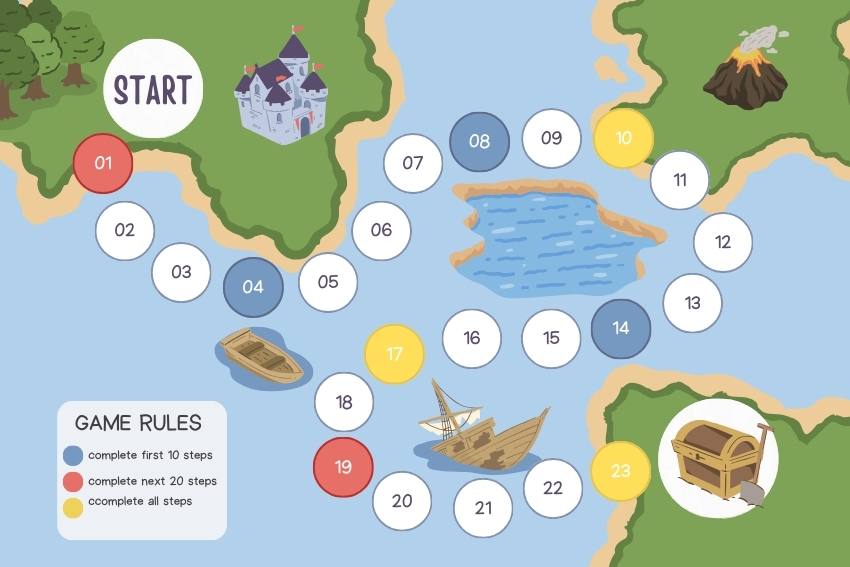10 Great Ways to Improve Your Child’s Writing Skills
Imagine your child, pen in hand, furrowing their brow in concentration, their little fingers forming letters, words, and eventually stories. It’s a moment of pride, isn’t it? But what if this picture is more of a wish than a reality? What if every writing task turns into a struggle, leaving you both frustrated?
you’re not alone. All parents have been there, wondering why their child can’t seem to get the hang of writing. It’s a common struggle, but one that’s often cloaked in silence. Let’s break that silence!
Why is writing important beyond the classroom? Because it builds confidence, encourages creativity, and equips children with the tools to articulate their thoughts.
I’ll share insights on not just the importance of writing skills but also on tangible ways to nurture them in your children. By the end of this, you’ll have a treasure trove of strategies to turn those struggles into successes. After all, the ability to write well is not just a skill; it’s a gateway to your child’s future.
10 Tips to Consider
WHY Your Child Struggles with Writing?

Statistics paint a startling picture of the prevalence of writing difficulties among children. A study reveals that up to 34.5% of children struggle with some aspect of writing. This could range from forming letters to organising their thoughts coherently on paper. It’s not a niche issue; it’s a widespread challenge that needs to be addressed.
The reasons behind a child’s writing difficulties can be as diverse as the children themselves. For some, the challenges are psychological; the fear of making mistakes can be paralysing. Others might grapple with the ‘looking loudly technique,’ where the ability to visualise and plan their writing in their mind’s eye doesn’t come naturally. Then there are those for whom the physical act of writing is the barrier — the coordination it takes to hold a pencil and form letters can be a mountain to climb.
For many, it’s not just one but a combination of factors that contribute to their writing woes. Perhaps it’s a lack of exposure to reading and writing at home, or maybe it’s an educational system that prioritises other skills. Recognising these factors is the first step towards helping your child improve their writing skills.
So, how can you help your child with writing?!
1. Story Dice Games
Story dice games are a wonderfully imaginative way to spark a love for storytelling and writing in children. It’s a powerful tool to encourage writing in early years. As children engage with story dice, they inadvertently partake in a write-to-learn process. They expand their vocabulary, understand narrative structure, and develop a sense of creativity that is crucial in writing for children.
It’s also a fantastic way for them to learn to write their name, as they can author their own stories, proudly signing off their creative works.
The premise is simple: roll a set of dice emblazoned with images and let the random pictures prompt the direction of a story. This playful randomness is fantastic for children writing their first stories, as it relieves the pressure of starting from a blank page.
For instance, if a child rolls a dice set and lands on an image of a dragon, a castle, and a crown, they could start their tale with a brave adventure in a mythical kingdom. This storytelling then naturally progresses to writing exercises for kids, as they jot down their stories and bring their imaginations to life on paper.
2. Personal Journaling with Fun Prompts
Personal journaling is a treasure trove of opportunity for children to express themselves and develop their writing skills. To get started, parents can generate prompt ideas by drawing inspiration from their child’s daily experiences, favourite books, or even dreams. This method not only bolsters how to encourage writing in early years but also cultivates a habit that could last a lifetime.
To make journaling enticing, selecting a visually appealing journal is key. A notebook with a vibrant cover or pages edged with their favourite characters can make children writing a more inviting activity.
10 creative prompts to help parents guide their children in this enriching exercise
✍️ Imagine you have a superpower for a day – What is it, and what do you do with it?
✍️ Describe your dream birthday party – Who is there, and what are you doing?
✍️ Write a letter to your future self – What would you like to tell them?
✍️ What is your favourite animal, and what would a day in its life be like?
✍️ If you could create a new planet – what would it look like, and who would live there?
✍️ Write about your best friend – What makes them special?
✍️ Recall your happiest memory – Can you describe it in vivid detail?
✍️ If you found a magic wand – what three wishes would you make?
✍️Think about your favourite book or movie character – What adventure would you go on with them?
✍️Write about a time you helped someone – How did it make you feel?
Encouraging children to personalise their journals by writing their name on the first page can give them a sense of ownership and pride. This little gesture can make a big difference in motivating them to fill the pages with their thoughts, dreams, and stories. Through journaling, they learn to write their name and thoughts, translating abstract feelings into written words—a foundational skill in writing for children.
3. Pen Pal Adventures

So, how do you start? Look for a pen pal program or link up with a friend who’s got a little one the same age. Then, let the adventure begin!
Picture this: your kiddo is waiting by the letterbox, eyes wide, bouncing on their toes for the next instalment of a story they’re writing with a new friend from halfway across the globe. They’re learning to write their name like a pro on every envelope, sharing tales about their world, and seeing it through someone else’s eyes. It’s pure gold!
And here’s the kicker – they’re not just scribbling notes. They’re embarking on writing exercises for kids that feel like a game. They’ll chat about their favourite hideout, the best ice cream flavour, or that epic moment when they scored a goal. It’s a chance to encourage writing in early years without the yawns.
Every letter is a surprise, a story, a piece of friendship that grows with each “Dear Pen Pal.” They’re not just learning to write; they’re learning to connect, share, and dream. So, grab some colourful paper and let’s start this pen pal journey. It’s writing for children with a twist of excitement and a dash of mystery, all wrapped up in an envelope.
4. Comic Strip Creation
Encouraging your child to invent a comic strip is a visual feast for their imagination. To kick things off, why not have a brainstorming session? Together, you can conjure up characters, from superheroes to talking animals, and plot out their zany adventures. Remember, early years are all about making learning a delight, so keep it light-hearted and filled with laughter.
Once the cast and story are in place, it’s time to grab some paper and pencils, and perhaps some bright crayons or markers. Guide your child through the process of illustrating their story, panel by panel. As they sketch and scribble, they’ll be developing their writing skills without even realising it. The magic of this exercise lies in the narrative; as they plot the dialogue and captions, they’re learning to write concisely and with purpose.
For children who are a tad older, challenge them to include specific elements in their story. Maybe today’s strip needs a twist ending, or perhaps the characters must learn to write their names in a new, mysterious script. The “write-to-learn” approach shines here, as they’ll be applying new vocabulary and grammar in a context that’s entirely their own.
5. Family Newsletter

Gather around the kitchen table, it’s time to create your very own family newsletter! This charming activity is not just a wonderful way to spend a Sunday afternoon, it’s also a sneaky little way to nurture those writing skills in your kids.
Start by picking a name for your newsletter – something that screams ‘us’, like “The Smith Spectacular” or “Adventures at Andersons'”. Then decide on the roles: who’s the roving reporter? The editor? The comic artist? It’s all about teamwork and, let’s be honest, having a giggle or two.
Next up, what’s the scoop? Did Dad burn the toast again? Has the family dog learned a new trick? Or maybe there’s an upcoming birthday that deserves a shout-out. As you chat about the content, you’re subtly showing your child how to gather ideas, a fundamental part of the writing process.
Now, bring out the pens, papers, and maybe even some stickers for that extra pizzazz. As your child starts to jot down stories, they’re not just telling Auntie Marge about the escaped hamster; they’re learning to write with a purpose. They’re engaging with the ‘write-to-learn’ philosophy, weaving in what they know, and sharing it in their own words.
So, what are you waiting for? Dive into the wonderful world of your family newsletter. By the time you’re sending out the next edition, you’ll see just how much your children’s writing has blossomed.
6. Interactive Writing Apps

In this digital age, there’s an app for everything, right? Well, guess what, there are heaps of apps designed to turn writing from a chore into a delight for your kids.
Kids Story Builder
First up, we have ‘Kids Story Builder‘. It’s like a digital fairy godmother for storytelling. Your kids can pick characters, settings, and even plot twists with a tap, transforming their wild ideas into written tales. It’s a brilliant way to encourage writing in the early years and to show children that writing can be as fun as any game on their tablet.
Alphabet Antics
Then there’s ‘Alphabet Antics‘. This one’s a gem for the younger scribblers just learning to write their name. It combines fun graphics with interactive tasks that make writing exercises for kids a joy rather than a drag.
Quest Friends
For the adventurers at heart, ‘Quest Friends‘ offers a journey through mystical lands with writing prompts that kids can’t resist. They get to write about their character’s escapades, which is a sneaky way to practice writing for children who think they’re just playing a game.
Galaxy Kids
And don’t forget about ‘Galaxy Kids‘. Not only does it encourage writing, but it also sneaks in a bit of grammar in a way that’s totally painless. Kids get to tackle missions using words and sentences, making the dreaded grammar rules something they’ll look forward to mastering.
7. Name Writing Activities

Why not kick things off with ‘Name Art’? Grab some crayons, glitter and stickers, and let your kids decorate the letters of their name. They’ll be learning to write their name, sure, but to them, it’ll just feel like they’re creating a masterpiece for the fridge.
Next up, how about a ‘Name Treasure Hunt’? Write their name on little cards and hide them around the house. As they find each letter, they can piece together their name – it’s like a puzzle that shouts them!
For something a bit messier, there’s ‘Squishy Bag Writing’. Fill a sealable plastic bag with paint, squish it all around to spread it out, then let your kids trace their name on the bag with their fingers. It’s tactile, it’s squishy, and it’s a super way to encourage writing in the early years without any stress about mess.
Or take it outside with ‘Sidewalk Chalk Stars’. Let them write their name in big, bold letters on the pavement. Not only does this give them a sense of pride in their name, but it also helps with those motor skills.
To seal the deal on these innovative activities, the savvy tutors at Edumentors, hailing from the UK’s top universities, give them two thumbs up. They’ve seen firsthand that these creative methods can propel a child’s ability to write with gusto, surpassing traditional methods. It’s not just about writing; it’s about building a foundation of learning that’s as enjoyable as it is effective. When it comes to writing, Edumentors’ tutors recommend these activities for a reason—they make learning stick, in the most delightful way
8. Outdoor Nature Diary
Start by equipping your mini Attenborough with a notebook – nothing fancy, just something that can survive a bit of mud and the odd raindrop. Then, every time you’re out in the park, the garden, or even just spotting birds from the window, encourage them to write or draw what they see. It’s like a scientific expedition, only with more snack breaks.
And here’s where we drop a fun fact: did you know that over 44.8% of kids say they’d enjoy writing more if it involved subjects they’re interested in? Nature is universally fascinating, so it’s the perfect hook to get those pens moving.
This diary isn’t just about the “what” they see – encourage them to write down the “how” and “why”, turning observations into stories. Why does that ant move that way? How does the flower know when to bloom? It’s about writing for children in a way that fuels their natural curiosity.
So, let them get mucky, let them ask a million questions, and watch as their writing goes from ‘because I have to’ to ‘because I want to’. This is how to encourage writing in the early years – by making it part of an adventure. And as they grow, these little entries will be precious snapshots of how they saw the world, one wild discovery at a time.
9. Book Creation
Alright, here’s a top-notch plan to turn your living room into the next big publishing house. We’re talking about making a book, and not just any book – your kiddo’s very own masterpiece. It’s like a craft session and a writing lesson all bundled up into one seriously fun activity.
Here’s the game plan: Grab some sheets of paper, a bunch of crayons, and any other arty bits you’ve got lying around. Then sit down with your young author-to-be and brainstorm. What’s the story? A daring space adventure? A mystery at the magic zoo? Or maybe a day in the life of their pet hamster, Sir Fluffy Whiskers?
Once you’ve got the plot, it’s time to break it down. Encourage them to draw pictures for the story and add some text. Could be a sentence per page for the little ones, or a paragraph if they’re a bit older. And remember, spelling mistakes? They’re just creativity in disguise.
Then, assemble the book. Staple it, tie it with string, whatever works. The key is to let them do as much as possible. It’s about writing exercises for kids that make them feel like they’re in charge – because when they’re the boss, it doesn’t feel like work.
10. Vocabulary Building Challenges
Let’s shake up the word game with some epic vocabulary building challenges that’ll get your kids throwing around new words like confetti. It’s about taking those ‘how to encourage writing in early years’ tips and cranking them up to eleven.
First, you gotta set the stage. Think of it like a game show in your living room. You could have a ‘Word of the Day’ challenge where everyone has to use a new, snazzy word as much as possible. Make it silly, make it serious, whatever tickles your fancy. Use sticky notes to put the word everywhere – on the fridge, on the TV, even on the dog if he sits still long enough!
Then, why not throw in a bit of friendly competition? See who can use the word in the most creative way. Award bonus points for funny sentences or for using it in their writing for children homework. It’s a writing exercise for kids that’ll have them learning without even realising it.
Why is this a tip worth writing home about? Because it’s not just about learning to write your name or piecing together a sentence. It’s about giving them the tools to express themselves, to paint pictures with their words. And that’s a skill that’ll take them from writing wobbly sentences to crafting stories that’ll have you hanging on every word.
Start Improving Your Child’s Writing Skills in Early Years!!!

Studies show that early writing, even scribbling, can light up a child’s noggin like a Christmas tree, developing neural connections at a rate that’s pretty mind-blowing. These connections in the brain are the building blocks for your kiddo’s future learning.
Now, let’s talk about the child prodigy Mozart. He was composing music by the age of five, which is bananas, right? But that’s the thing—early exposure to complex skills, be it music or writing, can set kids on a path to greatness. It’s not about churning out baby geniuses but about giving your child the tools and the chance to explore and grow their abilities from the get-go.
By encouraging writing in the early years, you’re opening doors to worlds of imagination, giving them a way to express themselves, and equipping them with the confidence to tackle any learning challenge thrown their way. So, grab those pencils and let’s make some marks that matter!
Conclusion
Wrapping it up, giving your kids a nudge with their writing is a bit like being their personal cheerleader, minus the pom-poms. You’re there to give them a leg up, offering a steady stream of encouragement and a guiding hand. It’s about boosting their confidence, giving them the tools to express themselves, and making sure they know you’re their number one fan, through every scribble and scrawl.
To really ramp up those writing skills, it’s all about practice, patience, and a sprinkle of creativity. Whether it’s through engaging games or just daily writing rituals, every little bit helps to build a fortress of skills they’ll thank you for later in life. Remember, it’s not just about teaching them how to write; it’s about showing them the power of words to convey their thoughts, dreams, and ideas.
And if you’re looking to give your child an even sharper edge, consider tutors from Edumentors, their personalised guidance can accelerate your child’s learning process. With Edumentors, learning becomes not just an academic task, but a doorway to a world of imagination and self-expression. So, why wait? Give your child the gift of words and the support to master them. Visit Edumentors today to learn more and start a journey that transcends the traditional paths of learning.










